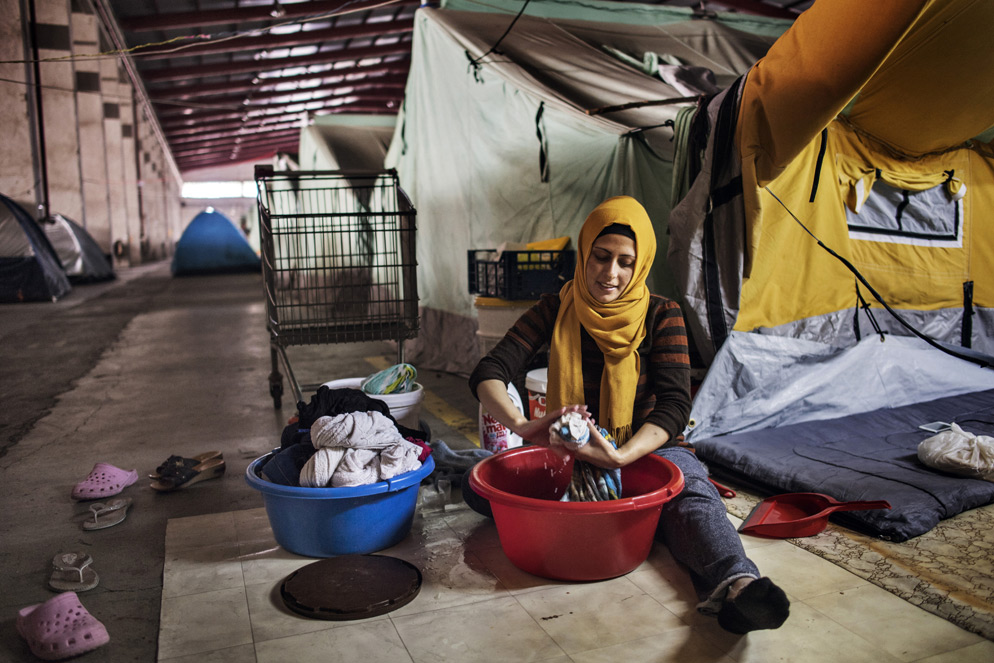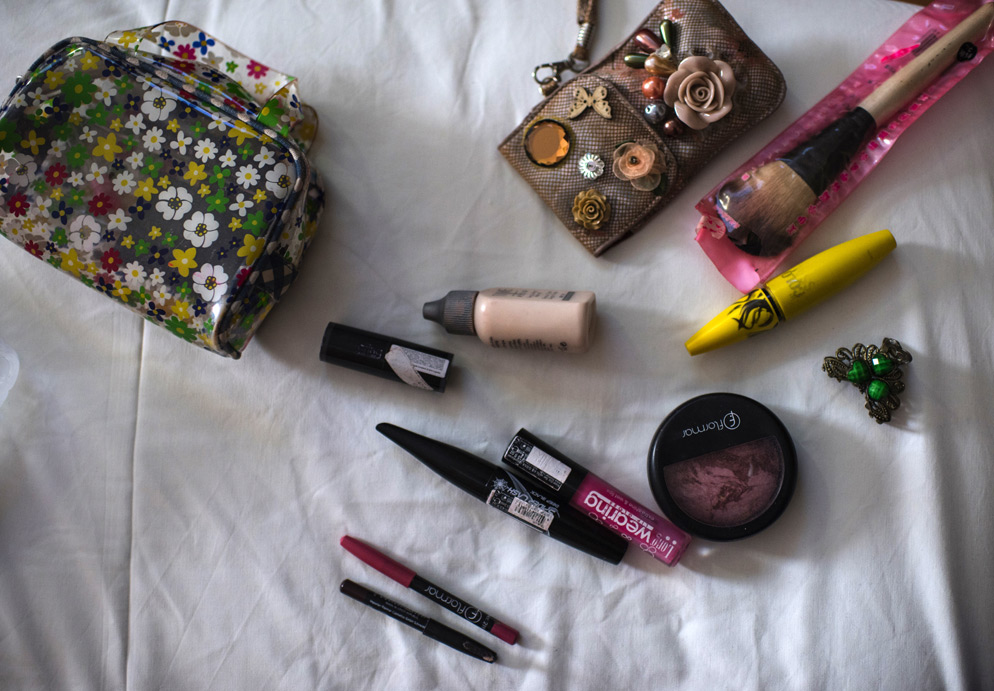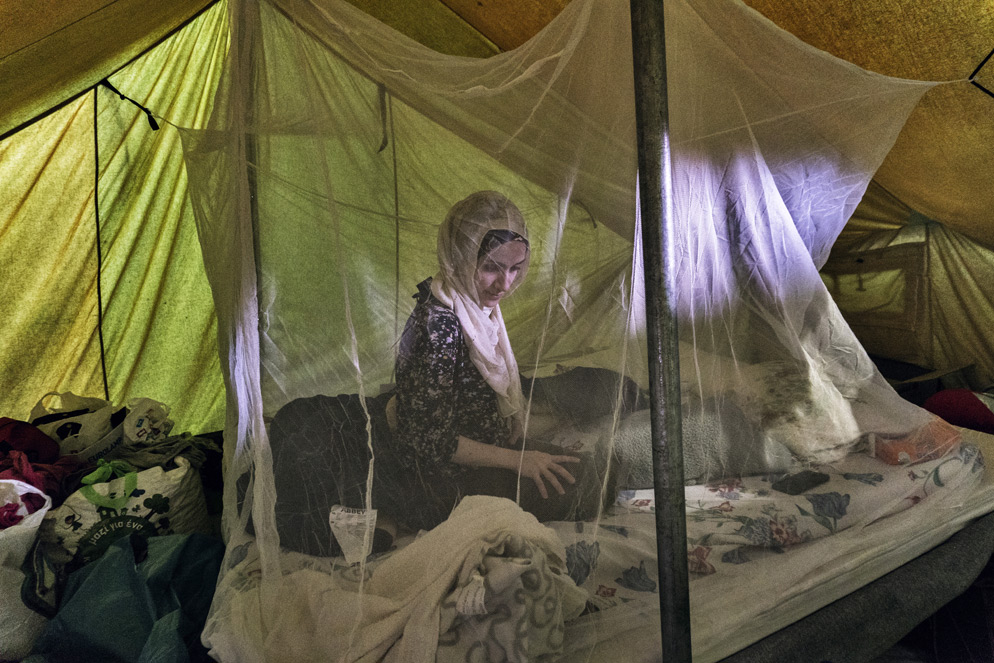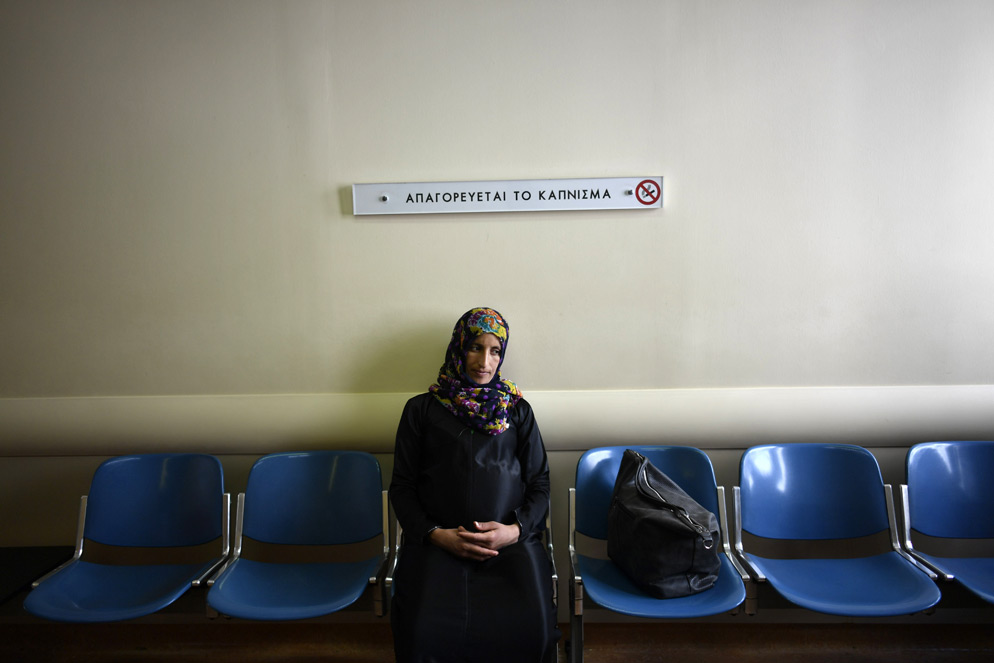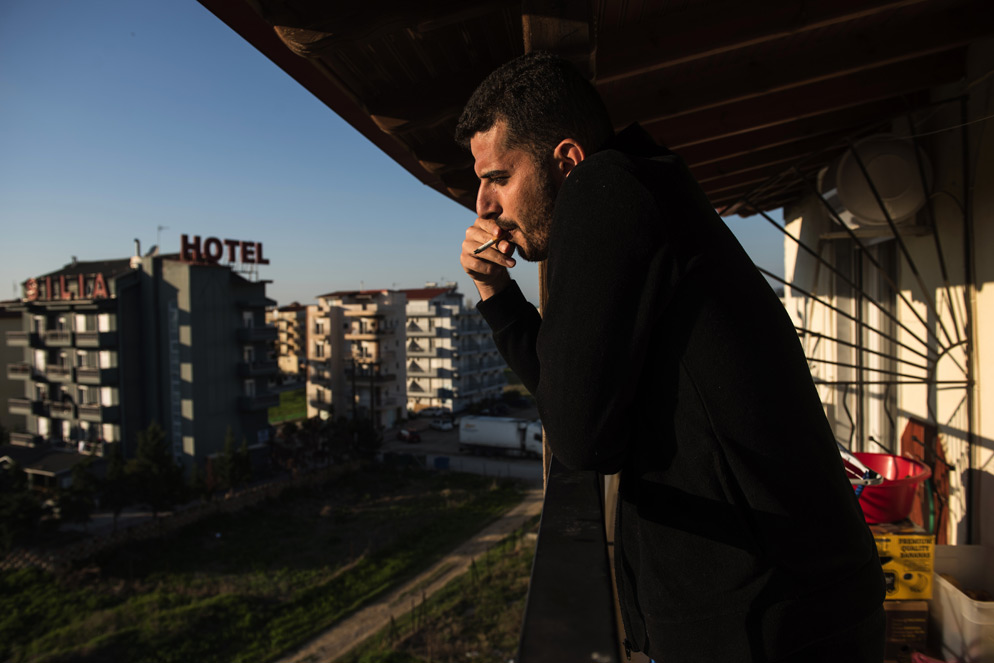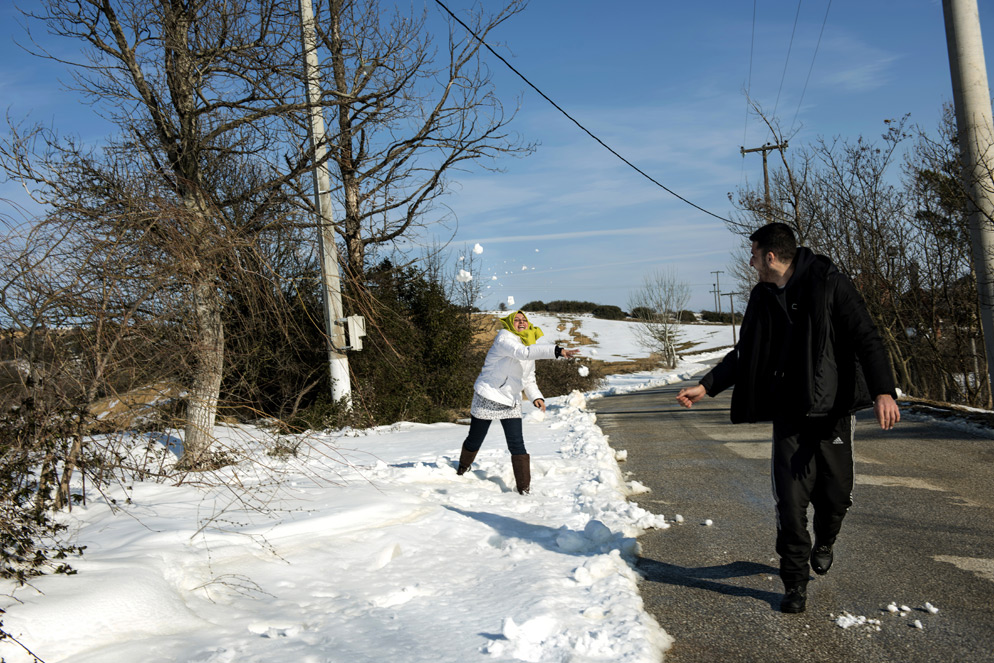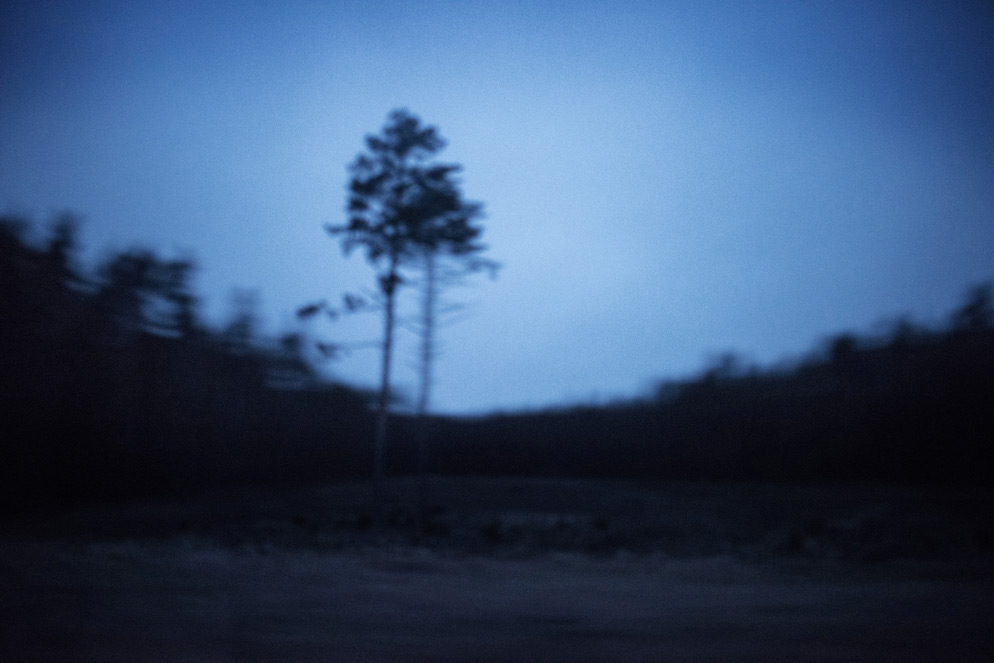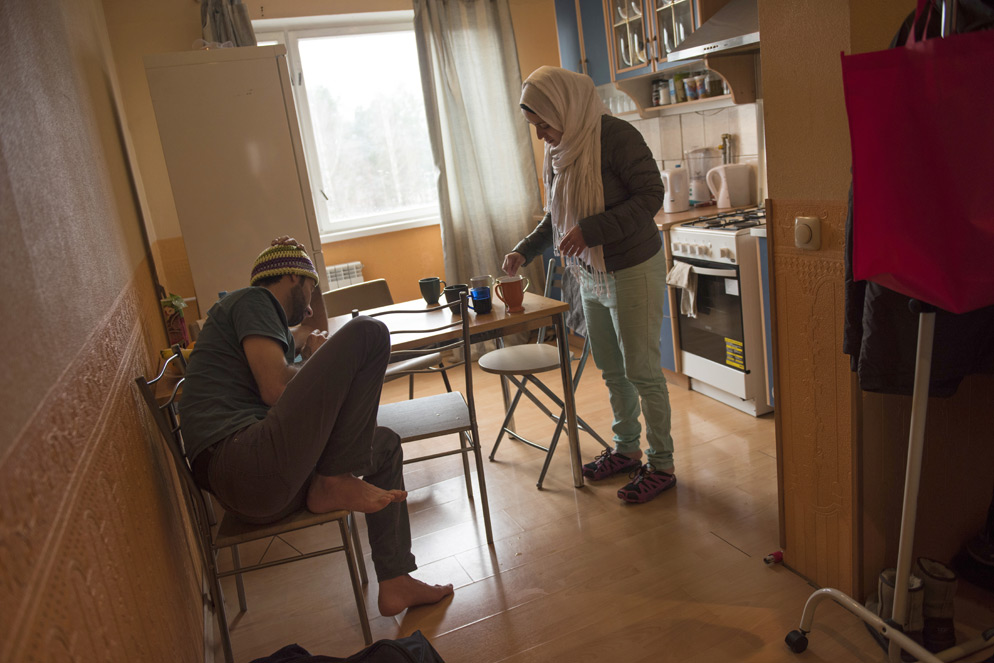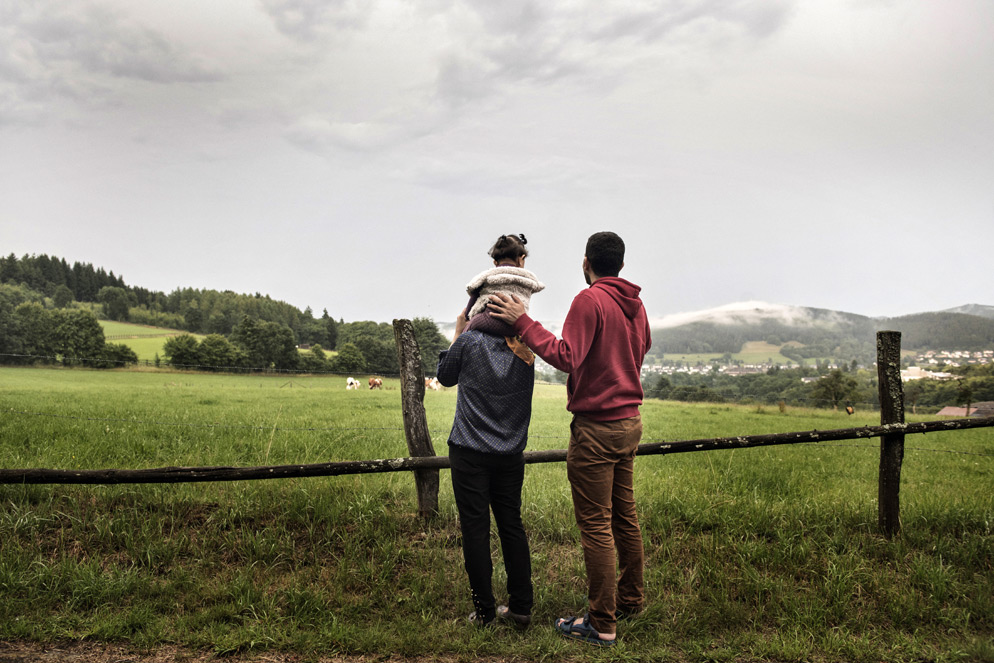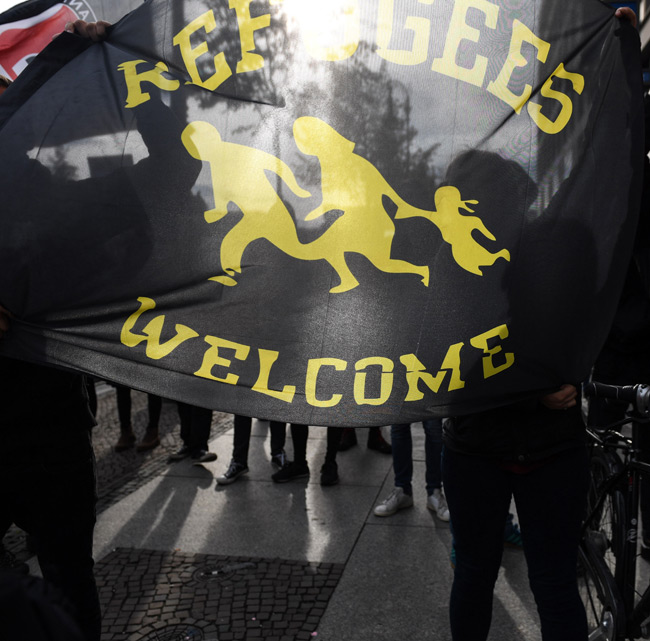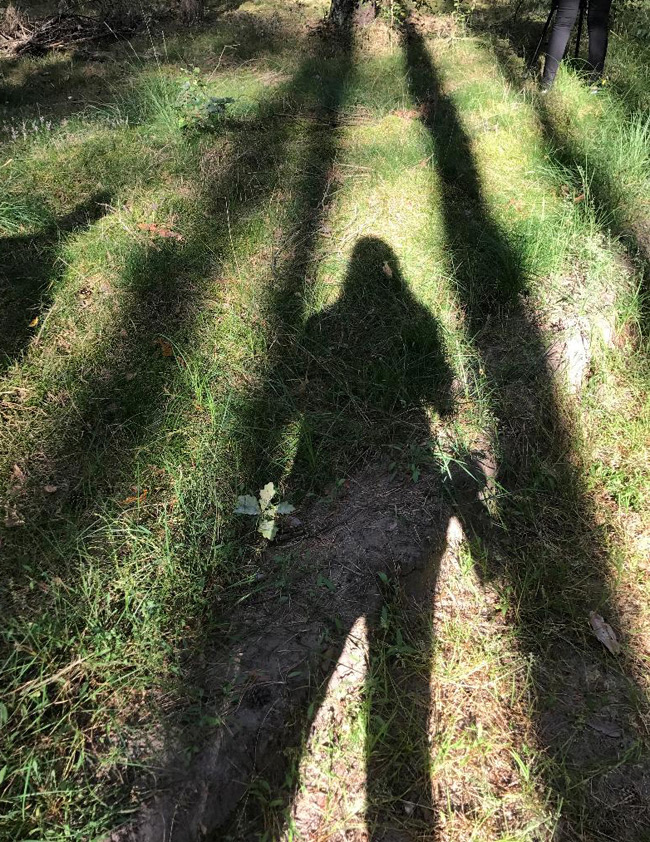Inside the Story: Photojournalist Lynsey Addario Documents Three Families' Search for Asylum
Somehow, while working on assignments around the world, keeping appointments and dealing with flight delays and schedule changes, Lynsey Addario managed to get us the images we needed, clear the paperwork and set up an interview for the story you're about to read.
We sent an e-mail thanking her for taking care of everything while she was in transit. She wrote back, "My life is in transit!!!"
Which is the response we might have expected from a photojournalist who titled her memoir, It's What I Do.
Lynsey has photographed wars and revolutions, refugee migrations, health and social issues and the changing roles of women throughout the world. She's shot for National Geographic, The New York Times, Newsweek and Time, and photographed in Afghanistan, Iraq, Darfur, the Republic of the Congo, Haiti, throughout the Middle East and Africa. She is a recipient of a MacArthur Fellowship, often called "the genius grant," which is given to individuals who "show exceptional merit and promise for continued and enhanced creative work." She's won a Pulitzer Prize for international reporting.
We talked with her about a 14-month assignment for Time, during which she photographed Syrian refugees as they tried to secure a safe place to live. The project was called Finding Home, and two other journalists were involved: reporter Aryn Baker, Time's South Africa bureau chief and roaming international correspondent; and Francesca Trianni, a Time staff video journalist.
"Timaa's makeup bag is one of her few memories from home," Lynsey says. "In Syria she was a music teacher; now she dreams of opening a beauty salon, but it's hard to make plans when she doesn't know if her family will get asylum in Germany."
Lynsey Addario for Time Magazine
Nour, about eight months pregnant, hand-washes laundry in front of her tent at the Oreokastro refugee camp in Thessaloniki, Greece, in August, 2016.
Lynsey Addario for Time Magazine
"We covered three families in refugee camps in Thessaloniki, Greece, and followed them as they were reassigned and relocated," Lynsey says. The story was reported in real time in print, in texts and on social media. "At the start, we weren't sure what we'd find, and we kind of left it open. We thought, Maybe it's one family, maybe it's one woman who's eight months pregnant, and we'll kind of follow her through the delivery of the baby."
The idea of following a family expecting a child and staying with the story for a year came from Time's photo editor, Kira Pollack.
"She was raising a young baby," Lynsey says, "and began to realize that she couldn't imagine doing it in a refugee camp—being on the run and having to find a place to get diapers, get clean water, bathe the baby."
Lynsey, who's spent a lot of her career documenting maternal health and women's issues, was a natural fit for the project, and she and Aryn Baker began by going to refugee camps around Greece. "The biggest obstacle was finding a family open to being documented. Syrians are by nature very conservative, and it was challenging finding someone who was comfortable having not only a still photographer but also a videographer. That took a fair amount of time."
Ultimately they found Timaa and her husband Muhanned, who were expecting their second child; Nour and her husband Yousuf, who were expecting their first; and Ilham and her husband Minhel, expecting their fifth.
"We met all three families within the same month," Lynsey says. "Ilham and Minhel and Nour and Yousuf were initially in the same camp; Timaa and Muhanned in a different one. Then they all moved—they moved around a lot, both within Thessaloniki and then Timaa and Muhanned to Estonia and then to Germany. They all took very different paths."
Timaa with her newborn daughter, Heln, in their tent in the Karamanlis refugee camp in Thessaloniki, in September, 2016.
Lynsey Addario for Time Magazine
Ilham waits to give birth to her fifth son in the Papageorgiou hospital, Thessaloniki. Baby Faraj was born in early October, 2016. "I wish my kids a future that is better than mine," she said, "without any wars or conflicts. I want them to speak a foreign language, to be educated and grow up to be doctors or engineers."
Lynsey Addario for Time Magazine
Under Pressure
Everyone was stressed. Primarily the families, who, facing an uncertain future in circumstances beyond their control, had agreed to be observed and documented, and the journalists, who had set out to tell simultaneously the one big story of refugees and the three individual stories of three families hoping to live their lives in a welcoming place of peace and security.
For Lynsey, Finding Home wasn't the only assignment she was working on. "We all had to keep up with developments and try to be there for 'monumental' moments in their lives as refugees and in the asylum process, and also with the pregnancies and the kids. To add to that, we had three different translators who we worked with, and we tried to have an all-female team because of the sensitivity of a birth story and having men in private spaces. It was incredibly hard on many levels."
It got tougher as time went on because that's the nature of these situations. "When you spend time with a family, they start to want things from you," Lynsey explains. "They start to say, 'What am I getting out of this? You're taking all my time, it's my private story, what is the point of me giving you all this access?' It's a very different situation when it's a one-off story or a story where you go in and spend a few weeks."
Lynsey estimates that she and the other journalists were with the families "maybe six to a dozen times" over about a 14-month period. "There were moments when they were very vulnerable and very depressed and not sure they would get asylum," she says, "and we, of course, became the target of that frustration because they see that we have passports, we have enough money, our lives are in order." And the journalists had homes to go to.
Yousuf on the balcony at a temporary apartment in Sidros, outside of Thessaloniki, Greece, in March, 2017. His wife, Nour, and six-month- old daughter, Rahaf, are inside. "When we first met Nour, she was seven months pregnant with Rahaf," Lynsey says. She had studied economics and completed her first year of university classes. "The war started halfway through my second year," Nour said. "We left everything...."
Lynsey Addario for Time Magazine
"One of Nour and Yousuf's best memories from Greece [is] playing in the snow in Thessaloniki, Greece, just a few months after Rahaf was born," Lynsey says.
Lynsey Addario for Time Magazine
"So they say, 'Why can't you help us?' And ethically, we can't. To try to explain that, over and over, was very difficult." Lynsey adds that "not all the families were like that, but certainly there was some undertone of it."
Overall, she says, the journalists were very lucky. "Given how complicated it could have been, the families were incredibly generous with their time and their lives. It was a humiliating situation to be in, and they were incredible about understanding the value of journalism and the importance of showing the world how difficult it is for Syrian refugees."
Which was, of course, the journalists' purpose, and the families understood that. But we wondered if part of their motivation might have been the thought, or the hope, that getting the media involved might help them find sanctuary.
"We were clear from the very beginning that we were there to tell their story," Lynsey says, "and we hoped that the result would be that people in positions of power, and people who have finances, would give money to organizations that help refugees. We never make individual promises, but [the hope] was to help refugees as a whole. it was difficult—how do you explain to someone the role of journalism who isn't accustomed to a system of free press?"
As it turned out, individual help was offered, though that also was to be a problem. "Throughout the course of the project we did have readers who said, 'I want to help Timaa or Nour or Ilham,' but we couldn't accept any donations during the project because that would have been unethical—like we were buying the story. We had many, many internal discussions about how to handle that. Do we put the donations in an account until the story's over and then give it to them? We didn't know how to handle it ethically [because] it was kind of an unprecedented way to tell a story in the sense that it was in real time—we were publishing as we were doing the story, and every story we did, they reacted to. It's not often you continue doing a story after segments have been published."
Eventually it was decided not to take any contributions until the story was finished. When the last installment was published, Time set up a GoFundMe page for donations.
"There are no people. Where are they sending us?" Timaa asked as she looked out the bus window as they made their way through the forest toward Polva, Estonia, in April, 2017.
Lynsey Addario for Time Magazine
Timaa and Muhanned have breakfast on one of the first mornings in their new apartment in Polva. The family, along with Muhanned's brother's family, was relocated to the small village of about 7,000 people. They feared it would be impossible to integrate and make a life in such a remote place.
Lynsey Addario for Time Magazine
Developments
The story started with three- or four-week trips—"to establish trust," Lynsey says. "Once the babies were born, and we went and saw those initial weeks and months, we'd go every two months or every month—it depended if there was anything on the horizon that was going to be life-changing."
There was not much photography going on during the "establish trust" period. "It's a lot of drinking tea, hanging out, having meals and talking," Lynsey says. And when the photography and reporting started, that pattern was, she says, the way the story was: "We became like part of the family in the sense that we really loved them all, and we really grew close, and they knew us—they always asked about [my son] Lucas; they always asked about my husband, Paul. We would sit and talk and drink tea for hours."
It was, she says, "an assignment and a story we were telling," but it was also real life—the families' lives. And being in a story not only changes the story, it changes lives. "They were conscious of how they looked and how they were coming across," Lynsey says. "Social media had changed that dynamic so much. Everyone is on Facebook and everyone sees what's being published."
Nour, Yousuf and Rahaf at the Bad Berleburg camp in Germany, July, 2017. Nour and Yousuf fled eastern Syria when fighting flared. "They are so happy to be in Germany," Lynsey says.
Lynsey Addario for Time Magazine
In the past two years, more than one million refugees and asylum seekers have arrived in Germany. About half, mostly from Syria, have been granted the right to stay and be resettled across Germany. Here, German supporters of refugees gather to show their support at a demonstration in Berlin in September, 2017.
Lynsey Addario for Time Magazine
As a photojournalist, one of Lynsey's most important guidelines is to have no part in a story and no effect on its narrative or outcome. That wasn't going to work for this story, and she knew it from the beginning.
"This was different," she says. "This challenged all the typical journalistic norms because we were involved [just] in the sense of being with these families for a year. I'm sure we affected the story. I don't know how to say [in what way], but when you spend a year with a family, inevitably you have an influence."
It changed the way she worked, too. "It was really important to show [their lives] in a very personal way because we all felt that this was something we hadn't really seen before. We were three journalists working together, and we all helped each other—Francesca shot stills when I couldn't be there; I shot video on my Nikon when there was [only] one spot in the ambulance; Aryn would do video or reporting—because it was so intense and demanding and important.
"It's a story I don't think I could have done alone. I don't think any one of us involved could have done it on our own."
As of this writing, Nour and Yousuf are in Germany, waiting for their documents. "They're in an apartment; she's learning German," Lynsey says. Ilham and Minhel stayed in Greece, applied for asylum and got their residency documents. "They're doing quite well," Lynsey says. "Their kids are in school—that was a huge issue." Timaa and Muhanned got asylum in Estonia, but had a very difficult time. "People were not very welcoming at all. They were in a remote village of about 7,000 people. Syrians and Arabs in general thrive on community and family and being able to share and partake in a society, and in Estonia they found it incredibly lonely, and people were very hostile. They're in Germany now, trying to get asylum—they have friends there—[but] at this time they have not been given an answer."
The project's journalists—reporter Aryn Baker, videographer Francesca Trianni and Lynsey—were in Estonia with Timaa and Muhanned. "It was a difficult time for them emotionally," Lynsey says, "and we stepped out and went for a walk to give them some space. It was a beautiful forest, and I'd never been there and was sort of fascinated by the trees, and I just shot my own shadow."
The Gear
Lynsey used the D850 and D5, although her main camera for this project was the D810. She favored fast prime lenses, especially the AF-S NIKKOR 28mm f/1.4E ED and AF-S NIKKOR 35mm f/1.4G, and also called on the reach of the AF-S NIKKOR 24-70mm f/2.8G ED.
Lynsey suggests www.time.com/findinghome as a key link to the Finding Home story. Kira Pollack, Time's director of photography and visual enterprise, introduced the project at time.com/4603782/finding-home/. Time's GoFundMe page for the families is at www.gofundme.com/timefindinghome. Google "Time Finding Home" for additional links. Lynsey's website, lynseyaddario.com, features a collection of images from her assignments and a note about her book, It's What I Do: A Photographer's Life of Love and War.

